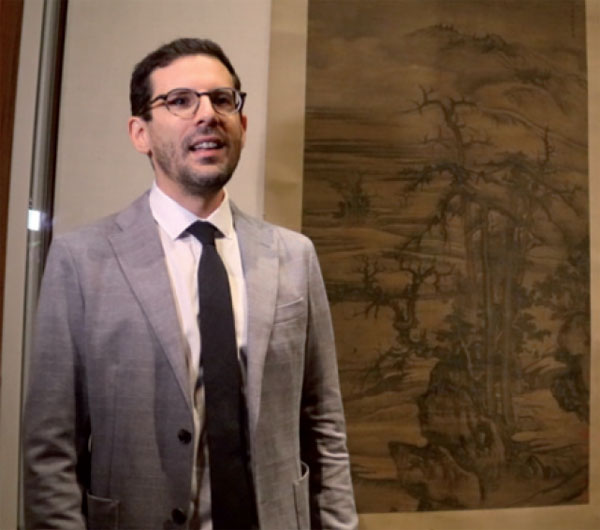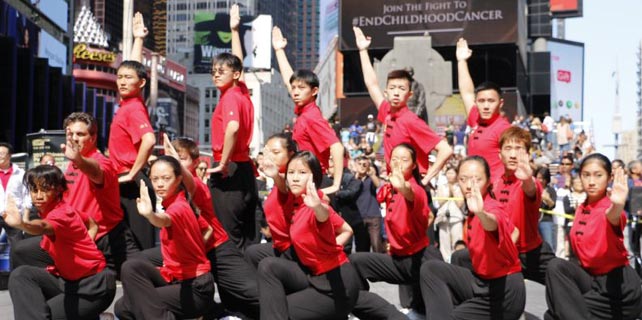Artistic Chinese landscapes explored at the Met
 |
|
Joseph Scheier-Dolberg, curator at the Metropolitan Museum of Art, explains a 14th century Yuan Dynasty painting last Thursday. JUDY ZHU /CHINA DAILY |
A millennium ago, the legendary Chinese landscape painter Guo Xi posed the question: "In what does a gentleman's love of landscape consist?"
The question is answered in different ways at The Metropolitan Museum of Art's current exhibition Streams and Mountains without End: Landscape Traditions of China.
Showcasing more than 120 Chinese-landscape paintings in three rotations, the display explores the many uses of landscape in the Chinese visual arts.
The focus is on paintings, but textiles, ceramics, bamboo carvings and other materials are included.
In the first rotation, which opened on Aug 26 and will run until Jan 7, more than 20 artworks are on display at nine galleries on the second floor of the museum.
Among the exhibition highlights are a Song Dynasty (960-1279) hand scroll, Two Landscapes Inspired by the Poetry of Du Fu, a rare example of early literati painting, attributed to Sima Huai (Chinese, active circa 1131-62); a 15th-century hand scroll, The Four Seasons, which takes the viewer through an extended journey; a 1571 hand scroll Fantastic Scenery in the Human Realm, a dynamic landscape of bizarre and contorted forms, by Wen Boren; two majestic landscapes from the Qing Dynasty court: Ten Thousand Miles along the Yellow River, dated to 1690-1722; and The Qianlong Emperor's Southern Inspection Tour, dated 1770, by Xu Yang.
Arranged by theme rather than chronologically, the works have been selected to provide gateways into the tradition, drawing distinctions between the types of landscape that may not be obvious at first glance.
"Each of the nine galleries has a specific theme related to landscape; the artworks on view at each gallery are under its theme," Joseph Scheier-Dolberg, assistant curator in the museum's Department of Asian Art, said at a Chinese media preview on Thursday morning.
Scheier-Dolberg, who works in the museum's Department of Asian Art, spoke in Mandarin.
"Concentrating on the question asked by Guo Xi, each theme could be considered an answer to that question," said Scheier-Dolberg, who believes the answer should be open-ended.
For the exhibition, Scheier-Dolberg selected artworks that he considers "interesting".
What appears to be a simple mountain dwelling is revealed to be the villa of the painter's friend, which encodes a wish for his happy retirement.
What seems to be a simple study in dry brushwork turns out to be an homage to an old master, a sign of reverence for what had gone before.
The exhibition brings the tradition to life by showing the layers of meaning behind the ubiquitous images of trees, streams and mountains.
A quotation from classical Chinese painting theory introduces each grouping, giving the tradition a voice in the exhibition.
And he tries to be creative - he selected three abstract landscape paintings by Chinese contemporary artists that "you can tell have been affected by both the 20th century Western abstract painting and traditional Chinese landscape painting".
xiaohong@chinadailyusa.com









